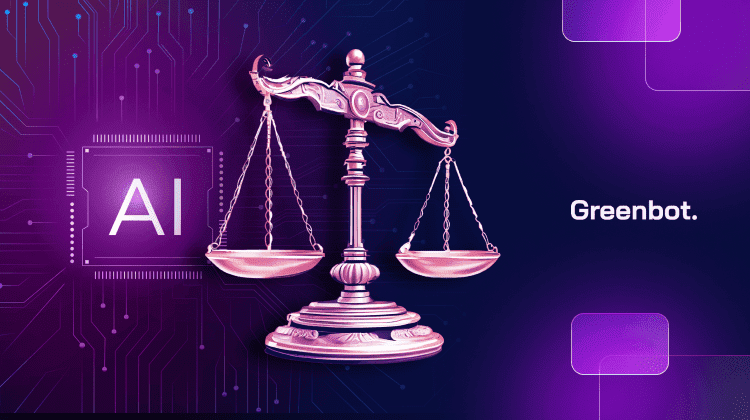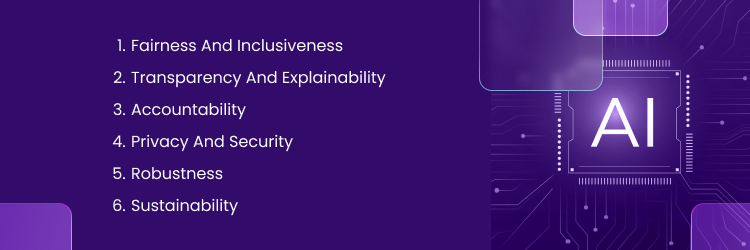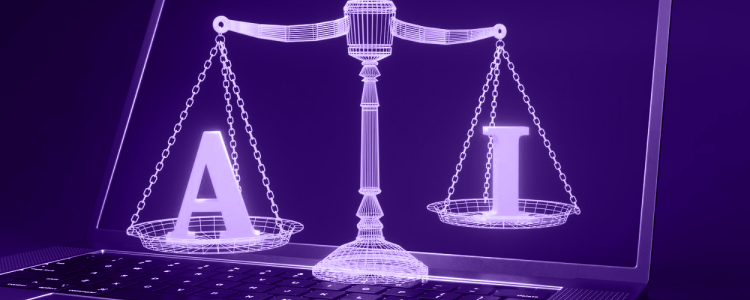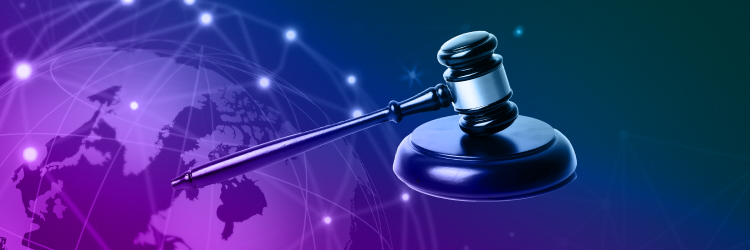
AI systems are now part of everyday life. They power home automation, virtual assistants, healthcare tools, and even hiring and credit decisions. As AI use grows, keeping these systems ethical, fair, and secure is critical.
So, what is Responsible AI? It’s the process of developing and using AI that is fair, private, secure, transparent, reliable, and ethical. This article will explain its key principles and best practices.
Understanding the Concept of Responsible AI

Responsible AI helps companies create AI systems that follow ethical standards like fairness, privacy, transparency, and reliability. This approach ensures AI applications are developed and used in a safe and ethical way. Many companies achieve this by forming dedicated teams that work with engineers to apply these principles during AI development.
Despite its importance, many companies still struggle with issues like bias and a lack of transparency. A survey by Hostinger found that over 60% of Americans fear bias and discrimination in AI-assisted hiring. These problems often happen when AI models are not properly checked or when Responsible AI principles are ignored.
Key Principles of Responsible AI

As AI improves efficiency and solves real-world problems, certain key principles are crucial for its responsible development. These principles help companies build AI technologies that users can trust:
- Fairness and Inclusiveness: AI systems have to treat all users fairly, regardless of race, gender, or other factors. Bias in AI has been a significant issue in areas like recruitment, loan approvals, and healthcare decisions. For example, Amazon found that its hiring algorithm favored male applicants due to biased training data.
- Transparency and Explainability: Users should understand how AI works and how it makes decisions. Companies must clearly explain how their models function, what data they use, and how they collect user data. This openness builds trust and makes it easier to detect problems.
- Accountability: Companies must take responsibility for their AI systems. They need to monitor, evaluate, and correct any unintended consequences. This ensures that their technology operates safely and ethically.
- Privacy and Security: AI systems manage sensitive data, so privacy and security are critical. Healthcare AI must follow HIPAA rules to protect patient data, and voice assistants must secure user consent. Responsible AI keeps data safe and meets legal requirements.
- Robustness: AI must be resilient and reliable. It should handle unexpected situations and recover from errors without losing accuracy or safety. Rigorous testing and ongoing monitoring help AI adapt to changing data and stay effective.
- Sustainability: AI development should limit its environmental impact. Many AI systems use large amounts of energy, increasing carbon emissions. Responsible AI focuses on using resources wisely and reducing its environmental footprint.
Implementing Responsible AI Practices
Applying Responsible AI requires a clear, structured approach. Here are effective practices for organizations:
- Define Responsible AI Principles: Set guidelines focused on fairness, transparency, accountability, and privacy. Involve AI experts and ethicists to ensure unbiased and ethical development.
- Educate and Raise Awareness: Train teams and stakeholders on ethical AI practices. Ongoing education keeps everyone informed about AI’s impact.
- Integrate Ethics Across the AI Development Lifecycle: Apply ethical standards at every stage, including data collection, design, and deployment. Conduct regular audits to detect and correct bias.
- Protect User Privacy: Ensure strong data security measures and transparent consent processes. Protecting user privacy is key to building trust and maintaining ethical standards.
- Facilitate Human Oversight: Enable human intervention for critical decisions to ensure accountability. This allows AI systems to be monitored and adjusted when needed, reducing the risk of harmful outcomes.
- Encourage External Collaboration: Partner with experts and follow global standards such as UNESCO or EU to stay updated on ethical guidelines.
- Trust, Transparency, and Governance in AI: AI systems should be built with clear governance to maintain trust and fairness.
Challenges in Implementing Responsible AI
Implementing responsible AI has its challenges. One of the biggest obstacles is resource constraints. Integrating ethical principles requires time, expertise, human resources, and financial investment, which can be challenging for smaller organizations.
Another challenge is the lack of standardization in AI ethics. While many companies have their own guidelines, there isn’t a universal ethical framework yet. UNESCO and the EU have proposed AI regulations, but these are still in the early stages and not fully implemented. This lack of alignment creates confusion and inconsistency in how AI is developed across industries.
The complexity of AI systems is also a major hurdle. Balancing ethical considerations with rapid technological advancements isn’t easy, especially as AI models, such as large language models (LLMs), grow more sophisticated and push boundaries.
Many fear that strict ethical guidelines and oversight could slow down AI development, limiting its potential. This concern often leads to resistance to adopting responsible AI practices.
However, these challenges should encourage companies and stakeholders to develop an AI risk management framework. Such a framework would address AI bias and other negative impacts and ensure that AI innovations are not hindered.
Importance of Responsible AI in Today’s World

Responsible AI is crucial as AI becomes a bigger part of daily life. Without it, AI systems can spread bias, invade privacy, and cause harm. For example, facial recognition tools have misidentified people of color, raising concerns about discrimination and surveillance.
In another case, AI recruiting software rejected women over 55 and men over 60, showing how bias can impact job opportunities.
Focusing on fairness, transparency, and accountability helps prevent these risks. It ensures AI works safely and fairly in healthcare, hiring, and law enforcement.
How Leading Organizations Define Responsible AI
Several well-known organizations and bodies have defined responsible AI in various ways. Here’s a quick look at their diverse perspectives:
- IBM’s Perspective: IBM defines responsible AI as guiding principles for designing, developing, and using AI. Their “Pillars of Trust” focus on explainability, fairness, robustness, transparency, and privacy. This framework helps AI serve organizations and stakeholders ethically.
- Microsoft’s Definition and Framework: Microsoft’s Responsible AI Standard is based on six principles: fairness, reliability and safety, privacy and security, inclusiveness, transparency, and accountability. This ensures AI remains ethical and trustworthy throughout its lifecycle.
- Other Influential Organizations’ Viewpoints: Organizations like UNESCO and the EU are creating global AI ethics guidelines. These aim to standardize responsible AI practices and ensure innovation aligns with ethical values.
Best Practices for Building Responsible AI
If you want to build AI that aligns with responsible AI principles, here are some tips and practices to guide you in the right direction:
- Bias Detection and Mitigation: Use diverse datasets and fairness tests to detect and reduce bias in AI models. Apply algorithms to identify and fix bias during development.
- Stakeholder Feedback: Involve a variety of stakeholders, such as end-users, ethicists, and industry experts. Their feedback ensures AI systems meet real-world needs and stay fair and inclusive.
- Robust Testing: Test AI systems in different scenarios to check reliability and performance. Stress testing helps AI handle unexpected situations without failing.
- Algorithmic Auditing: Regularly audit AI algorithms to improve transparency and accountability. Independent audits can catch ethical issues, mistakes, or performance problems.
- Human Oversight: Keep human supervision over AI, especially in critical areas like healthcare and finance. Humans should step in when needed to prevent harmful outcomes.
- Continuous Monitoring and Improvement: AI systems should be continuously monitored to ensure they evolve with new data and environmental changes. As machine learning models learn and adapt, regular updates and improvements help maintain fairness, safety, and transparency.
- Clear Communication and Transparency: Explain how AI models work, what data they use, and how they make decisions. Being open builds trust and helps users interact responsibly with AI systems.
Tools and Frameworks for Responsible AI
Here are some tools and frameworks that help ensure responsible AI development:
- IBM’s AI Fairness 360 (AIF360): This open-source toolkit helps detect and address bias in AI models. It provides metrics to assess fairness and algorithms to reduce bias. This ensures fairer outcomes in AI applications.
- Microsoft’s Responsible AI Standard: Microsoft’s Responsible AI Standard follows six core principles. These include fairness, reliability and safety, privacy and security, inclusiveness, transparency, and accountability. These rules help companies design and use AI in ethical ways. The goal is to create AI that supports and protects people.
- ISO/IEC 42001:2023 – AI Management Systems: This international standard provides guidelines for responsibly establishing and managing AI systems. It focuses on transparency, ethics, and accountability throughout the AI lifecycle.
- EU AI Act: This regulatory framework by the European Union aims to ensure the safety of AI systems and uphold fundamental rights. It categorizes AI systems by risk level. It then imposes stricter requirements on high-risk applications to protect the public.
The Role of Government and Policy in Responsible AI
Governments and policymakers play a major role in making Responsible AI a standard practice. Laws like the EU’s AI Act and UNESCO’s guidelines help prevent risks like bias and misuse.
Governments should also support global cooperation to solve cross-border AI challenges. Strong AI governance builds public trust and ensures innovation follows ethical rules. This creates AI systems that are safe, fair, and beneficial for everyone.
Case Studies: Responsible AI in Action
There have been several examples of Responsible AI in action. Here are a few:
- Healthcare: IBM’s Watson Health leverages AI to support doctors with diagnosis and treatment. By ensuring its models are trained on diverse and unbiased data, Watson helps reduce disparities in healthcare. IBM also focuses on transparency and explainability. This helps doctors trust and understand the AI’s recommendations.
- Finance: JPMorgan Chase applies Responsible AI in credit decisions to ensure fairness and transparency. Regular algorithm audits help prevent bias and discrimination. They ensure all applicants are treated equally.
- Education: Platforms like Coursera and Duolingo use AI to personalize learning. They use Responsible AI to tailor content to students’ progress.
How Responsible AI Impacts Society
Responsible AI shapes how we interact with technology. As AI becomes more common in healthcare, hiring, and law enforcement, it must be developed ethically to benefit everyone.
Ethical AI practices prevent bias that can harm marginalized groups. They ensure technology serves all people equally. Trust in AI is essential for driving social progress and improving quality of life.
Ethical Dilemmas and Responsible AI
As AI technology grows, issues like data privacy, bias, and job loss become more serious. Responsible AI helps companies make ethical choices when building and using AI. For example, AI models must be free from bias and clear in their decisions.
When challenges arise—such as balancing privacy with innovation—responsible AI offers a framework for solving these problems. By following ethical standards, companies can prevent harm, build trust, and ensure their AI supports society’s values.
Future Trends in Responsible AI

The future of Responsible AI will focus on stronger laws to uphold human rights and more global cooperation. The need for explainable and transparent systems will grow as AI handles more complex tasks. AI will also need to learn from feedback and correct its own biases.
New technologies like edge computing and quantum computing require careful, ethical use. These innovations must stay safe and accessible to everyone. The future of AI is promising, but it demands ongoing attention to ensure it is used responsibly.
FAQs
What does Responsible AI mean?
Responsible AI means creating and using AI systems that are fair, transparent, accountable, and respect privacy.
Why is Responsible AI important?
It helps build trust, ensures fairness, prevents harm, and aligns AI’s societal and human values.
What are the 6 principles of responsible AI?
The six principles are fairness, reliability, privacy, sustainability, transparency, and accountability. These guide the ethical use of AI from design to its development, deployment and use. deployment
What are some examples of Responsible AI?
Examples include:
- Healthcare AI that gives unbiased diagnoses.
- Financial tools that detect fraud fairly.
- Education platforms that offer equal learning access.
How can organizations ensure Responsible AI?
Organizations can:
- Set clear ethical rules.
- Check algorithms for bias.
- Train teams on ethical AI.
- Regularly monitor systems for fairness.
Final Thoughts
Responsible AI is vital for safe and fair technological innovation. Companies must deploy responsible artificial intelligence with clear company-wide rules, involve and engage stakeholders, and follow regulatory compliance. This ensures trustworthy AI that respects privacy principles, supports human rights and delivers socially beneficial outcomes.
Focusing on model fairness, auditing machine learning models, and using strong AI frameworks helps mitigate bias and avoid unfair outcomes. With solid data protection, ongoing user feedback, and ethical practices, AI teams can align AI with legal standards, protect human life, and improve overall well-being.

![10 Best Free AI Porn Generators in [current_date format=' Y'] 6 image22](https://www.greenbot.com/wp-content/smush-webp/2025/06/image22-150x150.png.webp)








